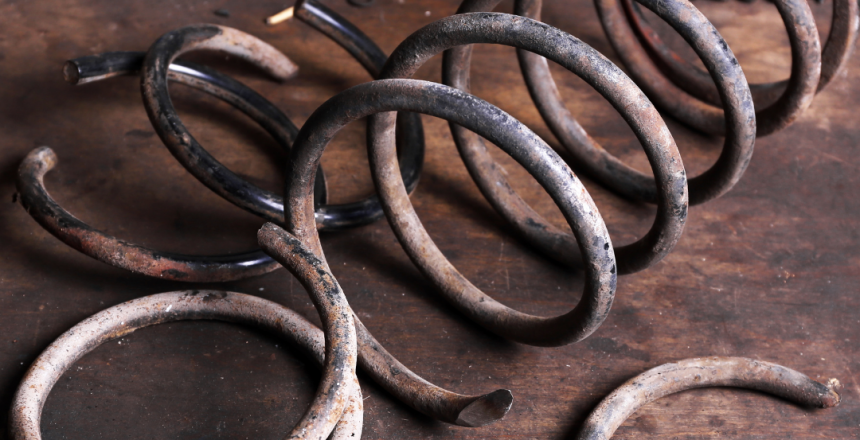Spring performance relies on the spring’s ability to resist corrosion. A corrosive environment can lead to a reduction of life and the load-carrying ability. Relying on different coating processes not only will help a spring resist corrosion, but will even prolong the life of the spring in corrosive environments.
Two different coatings provide some of the most successful results: spring powder coating and wet paint and plating. Each has their own principles, as well as benefits and drawbacks. Knowing how each one functions will help you make the right decision for your project’s needs.
The spring powder coating technique applies the coating electrostatically to the surface as a dry powder, and then heat applies to complete the coating. Many products can be used for the powder, including polyester, polyurethane, polyester-epoxy, straight epoxy, and acrylics. What is created is a thick, hard finish that is stronger than conventional plates. Often thicker coatings increase effectiveness.
Not only does the thick coating provide a durable finish, but it can be done quickly and easily because it is only one coat. The coating also allows custom colors in the finish, and textures can be manipulated. However, the thickness can be a drawback, because if a thinner coating is applied, then the polymer can create a bumpy texture. It is also easier for smaller projects, as the materials needed can be expensive and difficult to accommodate larger materials.
Wet paint is the process that applies liquid paint to the metal product. Most projects do this by a spray, pump, or pressurized vessel to apply the wet paint evenly. Plating refers to the process where metal is deposited on a conductive surface, which makes it ideal for decoration, corrosion inhibition, hardening, and improving paint adhesion.
When a product cannot be heated for powder coating, wet paint is the ideal alternative. It also does not require an oven for finishing, and allows for a wider range of color finishes. Not only that, but when a thinner finish is needed, wet paint will deliver. However, wet paint is not as durable as powder coating, and may require multiple coats before evenness is achieved.
Whatever your application needs, allow Mid-West Spring and Stamping to help find your best coating finish for the job. As a premier custom springs manufacturer, we craft compression springs in a variety of compression types, shapes, and materials to your individual specifications.
Mid-West Spring and Stamping is committed to creating more value for our customers with fewer resources through continuous improvement and the elimination of waste. Join the multitudes of customers that rely on us to optimize the fit, form, and function for their desired outcomes at a competitive cost. Request a quote today, or call us at 800-424-0244.

